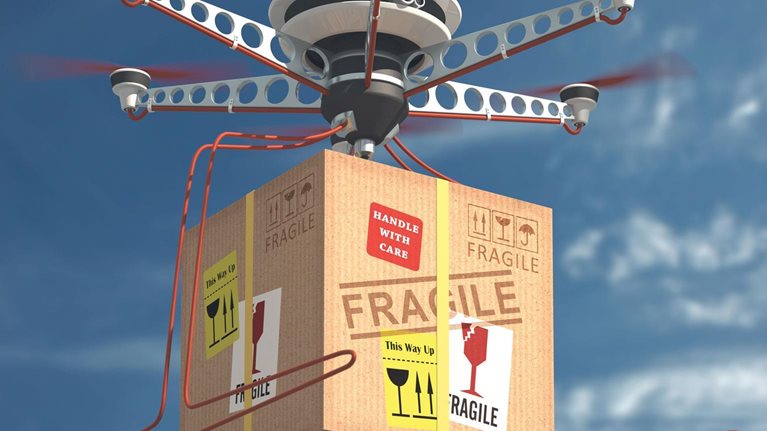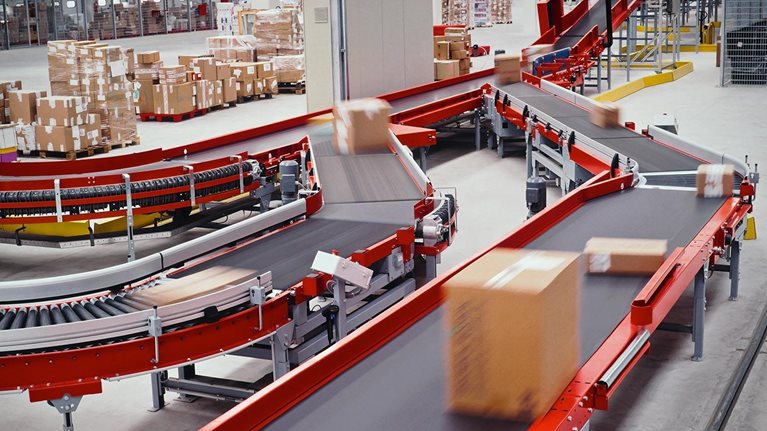The surface-freight transport sector—truckload, less than truckload (LTL), and rail freight—is fundamental to the North American economy. In 2015, it added $309 billion in economic profit. Companies based in the United States earned nearly three-quarters of those revenues, and the sector accounted for over 1 percent of US GDP, almost 2 percent of Canada’s, and nearly 6 percent of Mexico’s.1 These numbers shouldn’t be surprising. From raw materials to finished goods, nearly every product made or sold in North America relies on surface transport at one or several points in its life cycle. Transportation is therefore a substantial (and complex) cost for many North American companies.
Stay current on your favorite topics
The sector is not only large but also growing. Truck and rail growth rates, at both the northern and the southern borders of the United States, have exceeded domestic-freight growth in the past 15 years. And trucking’s productivity is up—the industry sold or decommissioned 20 percent of its fleet during the 2008–10 financial crisis but continues to move as much freight, by tonnage and value alike, as before. Slow and steady economic growth has raised utilization. Other factors also have contributed, including modal shifts as a result of e-commerce, miniaturization of products and packaging, and more efficient use of trucks and trailers. With utilization now high, the trucking industry has little slack to absorb disruptions or more robust economic growth.2
Some segments, however, are running into challenges, and change is on the horizon across the sector. In 2016 we surveyed over 100 shippers, warehousers, and transportation companies and found that near-term challenges, such as rule changes on hours of service and electronic-logging devices, were uppermost on the minds of both shippers and carriers. Trends that have longer-term or more strategic implications—such as automation, the widening of the Panama Canal, and demographic shifts—barely registered as concerns. Since then, of course, a new US administration has brought the North American Free Trade Agreement into question. Understandably, that’s the issue now dominating discussions in the sector. But no matter how that plays out, industry leaders should consider four historical and structural trends and the implications of our 2016 research.3
Nearshoring is real and has been driving trade growth
Over the past few years, many sectors have been nearshoring, but not all sectors are part of this trend (Exhibit 1), and those that are have vastly different reasons. High-tech companies are embracing the move as a way to bring manufacturing and assembly closer to demand, to reduce total landed costs, to minimize supply-chain disruptions, and to reduce intellectual-property risk. These benefits are particularly significant in a sector that evolves as rapidly and as often as high tech, whose imports from Mexico to the United States increased by $142 billion from 2002 to 2015—243 percent. The way companies carry out this strategy is changing, as well. Two years ago, the most commonly nearshored activity was manufacturing (68 percent of respondents). Now, it’s final assembly.

Like high-tech players, automotive companies have shifted production to Mexico in an effort to make their supply chains faster and more flexible and to access a labor force that’s increasingly skilled and priced competitively against parts of Asia. From 2012 to 2015, a small group of automotive manufacturers and suppliers invested more than $15 billion to open factories in Mexico, ultimately developing a dense sectoral footprint there.4 Mexican automotive exports to the United States via rail and truck rose by $170 billion from 2002 to 2015. Canada too has dramatically increased its automotive imports from Mexico, at a compound annual growth rate of 11.5 percent since 2006. In fact, Mexico is now a strong second among the countries from which Canada imports auto parts—up from a distant third in 2006.5 To be sure, carmakers and others are now watching carefully for changes in trade terms. Meanwhile, automotive trade flows remain a potent force.
Looking forward, several factors, particularly potential US policy changes, will determine how nearshoring evolves. From a labor-cost perspective, although wages are growing in Mexico and flat or growing only slowly in the United States, there’s more to the story.6 When nonpay benefits such as healthcare are considered, US labor costs will probably grow at the same rate as Mexico’s—3 percent annually—for the next five years.7 Currency fluctuations and the ongoing decline in the peso relative to the dollar will also continue to play a role in these decisions.
Would you like to learn more about our Travel, Logistics & Transport Infrastructure Practice?
Mexico’s changing dynamics are also affecting Canada. Even with the United States sandwiched between these two countries, they are each other’s third-largest trade partners, with Cn $37.8 billion between them in 2015.8 But for Canadian companies that want to take advantage of nearshoring, the logistics are even more complicated than they are for US companies: the Canadians must transship not only at the Mexican border but also at the northern one, to a Canadian carrier, as a result of cabotage laws. The north–south rail network is an alternative—shippers can pack containers in Mexico and move them in bond all the way to Canada, a method the auto sector uses a good deal.
Infrastructure investment in Canada has helped create a more sophisticated supply chain
Goods manufactured in Asia and destined for Canada typically arrive via the United States. Moving these products through a US port or a railroad requires payment in US dollars, as well as additional customs processing and a longer trip. Exchange-rate volatility and an increasingly strong dollar have made this journey much more expensive.
Because of these and other factors, the Canadian federal government has invested heavily—over Cn $50 billion in the past ten years—to, among other things, create an independent supply chain that will let companies bypass US ports and border crossings altogether.9 Individual provinces (which account for over 80 percent of public infrastructure spending) and even private companies are investing, too. The expansion of the Prince Rupert Port, improved rail and road networks, and inland hubs (such as CentrePort Canada, in Winnipeg) are recent investments, and more is on the way with the ten-year Cn $14 billion New Building Canada Fund.10 In 2015, the share of Canadian imports coming directly from Asia was 23 percent, up from 15 percent in 2001. Imports from the United States11 were 54 percent in 2015, down from 64 percent in 2001 (Exhibit 2).

New infrastructure has also opened the door to new transportation strategies for many Canadian companies. Canadian consumers might expect to reap benefits, such as lower costs and improved service levels. Larger Canadian transport providers, particularly rail companies, may begin to benefit from increased cross-country traffic—a departure from today’s mainly regional services.
E-commerce is redefining supply-chain strategy
As recently as ten years ago, supply-chain managers for brick-and-mortar retailers aimed to keep minimal inventories in stores and warehouses. But they built up those inventories during the autumn months in preparation for the holiday shopping season, creating an annual peak for ports, railroads, and trucking companies. E-commerce has permanently changed the expectations of consumers, however (Exhibit 3). First, they have become accustomed to purchasing from their homes (or on the go), to receiving their items quickly, and to free shipping, so they order more frequently and in smaller batches. Second, returns are accepted much more widely by e-commerce companies than by brick-and-mortar ones. Shoppers buy and return freely—a process that is simple for them, but quite burdensome for logisticians.

In response to these shifts, many retailers are increasing their permanent downstream inventories and changing the way they manage them, moving from megawarehouses to smaller, more flexible facilities closer to consumers. While the e-commerce giants, such as Amazon, are setting this trend, smaller players are investing urgently, too. As a result, the last mile of delivery is becoming even more critical. More distribution centers near densely populated areas cut the average shipping distance.
That’s great for consumers, but it chips away at many of the efficiencies transportation providers have gained over the years. At one big company, truckload miles per truckload trip have declined by 25 percent.12 Less-than-truckload players are also seeing a dramatic effect, but to their benefit: LTL has increased by 9 percent annually since 2009,13 and the boom does not appear to be letting up. E-commerce and growth in reverse logistics have boosted LTL, which in turn has become increasingly efficient at moving freight out of its networks.
In Canada, online retail sales are growing quickly, from Cn $22.3 billion in 2014 to an expected Cn $39.9 billion in 2019, which would be nearly 10 percent of all retail sales.14 A number of obstacles that have held back Canadian e-commerce may be fading away. Infrastructure investment will probably lower the cost of shipping. Meanwhile, big retailers have put in place strong strategies, organizations, and footprints to offer Canada’s online consumers massive scale.15 Similarly, Mexico is beginning to catch up in e-commerce, but the big obstacle there is the fact that credit cards are far less common, making it more difficult for consumers to transact. Despite that, online sales are expected to double (to 4 percent of all retail sales) by 2020. Here too, large players are driving the change.16 Amazon launched an end-to-end Mexican operation in June 2016 and is already providing access to its offerings in innovative ways—for example, by selling gift cards for cash at stores all over the country.

How customer demands are reshaping last-mile delivery
Until recently, consumers had to accept passively whatever a shipping service company provided unless they wanted to pay significantly more to expedite. But supply chains are entering a disruptive reality powered by e-commerce and reverse logistics, so companies need to be prepared for continual and unpredictable evolution.
Technology levels the playing field
Our research shows that across North America, the trucking market is extremely fragmented. In the United States, the top ten players control just 12 percent of it (Exhibit 4).17 In fact, of the more than 275,000 for-hire trucking companies in the country, nearly 90 percent have ten or fewer tractors.18 In Canada, fragmentation is similar, and in Mexico, it is far more pronounced: the top ten players control just 14 and 3 percent of their respective markets as measured by power units.19, 20 The story is similar when measured by revenues.

Recent technological advances will benefit all carriers, especially smaller ones. Better access to market information, for instance, will give small players opportunities to win more freight and to get more insight into the balance between market prices and demand—and earlier in the process, too. As small carriers increase their ability to exploit available knowledge, they will be able to compete for more opportunities than ever before, in both baseline and peak freight. Freight-matching apps and other technologies will improve connections. And established 3PLs now offer a plethora of fully loaded services (covering activities such as exception handling, document management, third-party interactions, and nearby load alerting) on desktop and mobile platforms.21 With these new tools, smaller carriers are becoming increasingly able to punch above their weight.
The changing demographics of drivers will also favor smaller carriers. As populations in the United States and Canada age, this part of the workforce shrinks. In Canada, for instance, truck drivers are not only older, on average, than other labor pools (44 as opposed to 40 years) but also aging faster.22 Already, drivers are significantly harder to find. The Conference Board of Canada predicts a shortage of 25,000 to 34,000 drivers by 2024, while the Canadian Trucking Alliance puts it closer to 48,000. In the United States, this oft-discussed problem is expected to grow starker as older drivers leave the workforce faster than younger drivers enter it. Projections of the driver shortfall vary from 100,000 to 175,000 by 2024.23
In Mexico, the executives we spoke with had little concern about a shortage of drivers, but a lack of hard data makes it difficult to know for sure whether or not this is a problem. In any case, any shortfalls in driver capacity will primarily affect larger consolidated-shipping companies. Small, independent trucking companies tend to rely on a limited number of longtime employees and have lower turnover rates, on average.24
The North American recession of 2007–09 was hard on surface-transport companies, but today volumes are back, and resilient carriers have become more efficient. Over the past several years, Canada and Mexico have rapidly built supply-chain capabilities for more efficient transport, both domestically and abroad. By embracing e-commerce, US consumers have fundamentally changed the supply chain, pushing inventories further downstream. Other changes are also gathering force, including emerging technologies such as autonomous vehicles, connected devices, alternative fuels, and blockchain, to name a few. As a result of all these changes, transport markets are less predictable than ever, and require more vigilance from executives.


